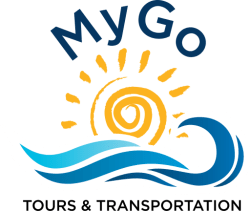
Sunfest 2025
Sunfest 2025
Known for its natural beauty, Lake Cowichan, BC is popular for adventure and outdoor enthusiasts, and ecotourism is becoming one of its fastest growing sectors. Sight-seeing trips and tours and those featuring fishing, kayaking, and hiking, draw people to the area every year.
Every year, the town plays host to SunFest, officially known as the SunFest Country Music Festival. This is the premier country music event of the region, the largest in western Canada, and it’s held annually in Lake Cowichan. In 2025, the four-day festival is scheduled from July 31 to August 3 at the Laketown Ranch Music and Recreation Park in Lake Cowichan.
Festival Overview
SunFest has established itself as a cornerstone of the Cowichan Valley’s cultural scene, attracting country music enthusiasts of all ages from across Canada and beyond. The 2025 edition promises an impressive lineup of artists, diverse ticketing options, and a range of amenities including camping, food, and on-site activities to enhance the festival experience.
This Year: Lineup Highlights
Held over the BC Day long weekend, the 2025 festival features a blend of established stars and emerging talents. Come see the rising stars of country music and the headliners that will ensure another fabulous Sunfest experience in the Cowichan Valley:
- Thursday, July 31: Canadian Tim Hicks kicks off the festival with his signature crooning style.
- Friday, August 1: Multi-platinum artist Jordan Davis’ smooth baritone is sure to delight; and Ashley Cooke will also take the stage, offering a mix of contemporary country sounds.
- Saturday, August 2: Bailey Zimmerman, known for his country-rock style, headlines the evening. The gravelly voiced Chase Rice, a veteran of country festivals worldwide, will also perform.
- Sunday, August 3: Sawyer Brown, Ontario boy Owen Riegling, and the Grammy-winning dynamics of the Brothers Osborne close out the festival with their winning performances.
Venue: Laketown Ranch Music and Recreation Park
The festival is hosted at the Laketown Ranch Music and Recreation Park, a renowned venue in Lake Cowichan, approximately 30 kilometers northwest of Duncan. This area is a pristine, naturally beautiful environment that is home to herds of elk and other wildlife. The park offers a spacious outdoor setting, ideal for large-scale events, and provides attendees with scenic views of the surrounding natural beauty.
Ticketing Options
SunFest 2025 offers a variety of ticketing options to cater to different preferences:
- Weekend Passes: Access to all four days of the festival
- Single-Day Passes: For those interested in attending specific days
- VIP Packages: Enhanced experiences with premium seating, exclusive lounges, and other amenities
Tickets are available through the official SunFest website and authorized ticketing partners.
Transportation: Getting There in Style
Last year Sunfest attracted more than 10,000 fans. Just imagine all those vehicles trying to find a great parking space … just like you! Sound like a headache?
MyGo Tours has been the number one local transport provider for Sunfest for the past 6 years. They shuttle to North Shore and South Shore along with downtown Lake Cowichan. Affordable and convenient, it’s a reliable way to shuttle without the hassle of parking or late night walking. The service will pick you up at your location and drop you off directly at the festival grounds entrance. Shuttles begin mid to late afternoon and end at 2 am each night with the possibility of operating later depending on volume. Early reservations are recommended by texting (250) 732-1120.
Accommodation and Amenities
Attendees can choose from various accommodation options, including on-site camping and nearby hotels. The festival site is equipped with essential amenities such as food vendors, merchandise stalls, and rest areas to ensure a comfortable experience for all guests.
Community Impact
Looking to spend your holiday dollars north of the border? SunFest significantly contributes to the local economy by attracting visitors who support local businesses, including hotels, restaurants, and shops. The festival also provides a platform for local artists and vendors, fostering community engagement and cultural exchange.
Come visit the beautiful Cowichan Valley this summer! SunFest 2025 in Lake Cowichan, BC, is set to be a memorable celebration of country music, community, and the natural beauty of the region. With its diverse lineup, scenic venue, and comprehensive amenities, the festival offers an experience that appeals to both country music aficionados and newcomers alike.







